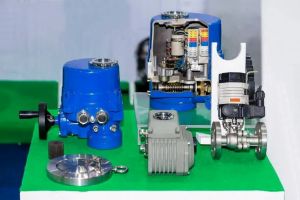


The Importance of Accurate Stroke Adjustment in Control Valves
As a leading control valve manufacturer in China, we provide premium valves and control actuators expertly designed to meet a wide range of industrial requirements.
In modern industrial automation, control valves are essential for regulating flow, pressure, and temperature. However, prolonged use without proper maintenance can cause stroke inaccuracy—a condition where the valve does not open to the commanded position, potentially affecting system performance, efficiency, and safety.
A valve’s “stroke” refers to the full range of motion of its plug or disc—typically measured from 0% (fully closed) to 100% (fully open). Over time, wear, vibration, pressure changes, and environmental factors can lead to deviations between the input signal and the actual valve position. For instance, a 50% command may only open the valve 40%, leading to unstable process control.
To correct stroke inaccuracy, routine calibration is crucial—especially in precision-critical systems. Calibration ensures linear response by aligning valve movement with signal inputs at five standard checkpoints: 0%, 25%, 50%, 75%, and 100%.
Zero Point Adjustment (4 mA)
Send a 4 mA signal to fully close the valve. If the valve isn’t fully shut, manually adjust the zero mechanism inside the positioner.
Mid-Stroke Check (12 mA)
A 12 mA signal should result in a 50% valve opening. If incorrect, adjust the span setting. Ensure the feedback linkage is vertically aligned to avoid bias.
Full Stroke Verification (20 mA)
Apply 20 mA to confirm full opening at 100%. Any mismatch requires further span adjustment.
Fine-Tuning (25% and 75%)
Test at 25% and 75% to ensure smooth, proportional operation throughout the stroke. Repeat adjustments if necessary.
These devices use cams, springs, and levers for feedback. Still widely used in tough environments, mechanical positioners demand manual calibration and maintenance—providing excellent training for new technicians in valve dynamics and process control.
These digital systems come with auto-calibration, diagnostics, and user-friendly interfaces. They streamline setup, reduce labor, and improve accuracy. Though easier to manage, they still require skilled interpretation of performance data, trends, and alarms.
Whether mechanical or intelligent, valve positioners bridge the gap between control signals (typically 4–20 mA) and physical valve movement. A failed positioner can trigger manual operation, halt production, or raise safety alarms—especially in high-stakes industries like oil and gas or power generation.
Calibrate regularly (every 6–12 months based on usage and environment)
Check alignment of feedback linkages to prevent mechanical errors
Avoid over-tightening parts during reassembly
Utilize diagnostics in intelligent systems to detect early signs of failure
Log calibration data for historical reference and troubleshooting
Stroke calibration is essential for reliable process control. While intelligent positioners offer ease and precision, mechanical models remain valuable for rugged applications and technician training. Regardless of type, keeping positioners in top condition ensures accurate valve response, reduces downtime, and safeguards overall system performance.Know more about Google SEO Directory
